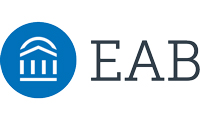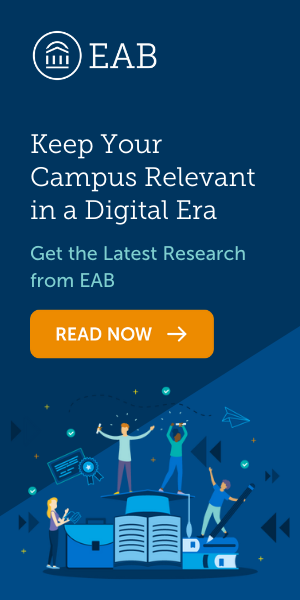The pandemic’s impact on international student enrolments cannot be understated, but universities have a number of strategies at their disposal to leverage their strengths
Increasing international enrolments is a strategic priority for universities in the UK, Australia, Canada and the US. The impact of the pandemic has been significant: workforces have been cut dramatically, third-party recruitment agencies are operating with smaller teams, new markets are expanding and there’s a mismatch in student supply and demand.
“Universities are having to do more with less, and that is likely to persist for years to come,” Michelle DiMenna, senior analyst at insights company EAB, said during a webinar discussion on how institutions can leverage hidden enrolment drivers, hosted by Times Higher Education in partnership with EAB. “Many feel as though they’re already underperforming, that there have been areas where they have struggled to leverage opportunities.
“We talk a lot about the importance of an outside-in approach that starts with the students, identifying their needs and building a strategy or marketing campaign that aligns with those needs,” DiMenna said. However, this approach can present practical challenges in the current, volatile market. It’s hard to get reliable data on student engagement and intentions during a pandemic, and there’s an assumption that students across markets value the same things.
“Institutions that have been able to overcome these challenges have focused more on an inside-out approach recently,” explained Larisa Hussak, senior director of research at EAB. “What experiences or opportunities do current international students have? What unique or niche programmes do we offer? Then they can assemble a strategy around these core strengths, rather than assumptions of the market.” However, universities will need support in three key areas to get this right: from faculty, from existing students and from investment in international student career development.
Minnesota State University in Mankato has seen a 300 per cent increase in applications over the past year after involving faculty in a global advisory committee that shapes activities such as study abroad programmes. Faculty with existing travel plans are incentivised to add a recruitment visit to their trip, saving time and money on sending a separate recruitment team.
Indiana University, meanwhile, has run virtual workshops in emerging markets such as Mexico in disciplines of particular interest to prospective students. “This has given students a taste of the classroom experience while faculty just do what they do best – teach a topic they’re passionate about,” DiMenna said. More than 95 per cent of attendees said they would recommend the workshop to a friend.
Hearing from existing students can carry a lot of weight when it comes to prospective enrolments. At Pepperdine and Brock universities, students are offered incentives of either sponsorship or a tuition waiver to act as ambassadors for international student recruitment. The application process is competitive, and students receive training and are set clear goals.
They are also expected to create content for social media channels. “It’s intensive but helps them to be genuine and authentic rather than the university telling them what to say,” said DiMenna. Compared with hiring full-time recruitment agents, savings have been significant and “students have an unfiltered glimpse of university life from a trustworthy source”.
Although 96 per cent of incoming international students believe future career impact should be the deciding factor in their choice of institution, universities spend nine times more on marketing to prospects than they do on career development and support. Offering personalised, holistic career support can therefore be a real differentiator when it comes to enrolling international students.
Pace University in New York runs the Inspire programme, for example, which offers a pre-enrolment module looking at job market trends and soft skills. International students who joined this programme had greater engagement in the later stages of the application process, it found.
The panel:
- Michelle DiMenna, senior analyst, EAB
- Larisa Hussak, senior director of research, EAB
Watch the webinar on demand above or on the EAB YouTube channel.
Find out more about EAB.








